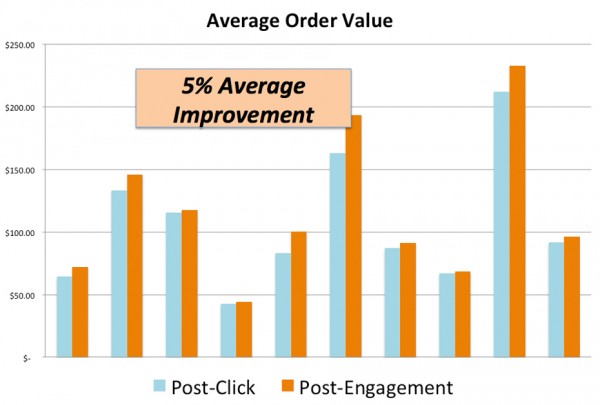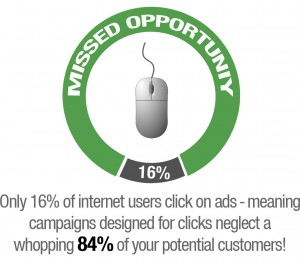Three Measurement Methods Challenging Campaign Performance: Key Takeaways from OMMA Global 2012
The challenge of appropriately attributing online advertising’s influence on a user exposed to multiple channels continues to slow the movement of additional ad spend by brands. That was one of the topics highlighted at the OMMA Global conference in San Francisco recently. While the historic battle cries of view-through impressions, click-based optimization and last-touch attribution […]
The challenge of appropriately attributing online advertising’s influence on a user exposed to multiple channels continues to slow the movement of additional ad spend by brands. That was one of the topics highlighted at the OMMA Global conference in San Francisco recently.
While the historic battle cries of view-through impressions, click-based optimization and last-touch attribution are finally being dismissed and downplayed (as they should be), the push for viewable impressions to become the leading metric played a prominent role in the agenda.
The challenges of online performance measurement is top of mind for many of us in the online advertising industry — particularly for those of us charged with maximizing campaign yield. It’s worth recounting some of the key takeaways from OMMA that reinforce why choosing the right metrics plays such an integral role in campaign performance.
Here are three common practices affecting campaign yield:
• Trusting Post-Impression (View-Through) Attribution: comScore recently conducted a study evaluating the current quality of ad delivery. The results revealed that 31 percent of delivered ads were never actually seen by consumers — meaning that serving ads to users is not the same as creating an “impression” or generating a “view.”
This means that advertisers who pay for online ad campaigns based on post-impression attribution are likely charged for consumer behavior that was not influenced by an ad, given that there’s no way to prove whether ads were seen at all.The frequency of non-viewable ad inventory is especially troublesome for retargeted banner buys.
Serving ads to site visitors after they’ve already visited and abandoned is a highly effective marketing methodology. But with no burden to prove that ads were seen, there is an incentive to spread budget dollars thin by purchasing as much cheap, non-viewable inventory as possible and claiming credit for all subsequent conversions, even though a large portion of converters will have never truly seen an ad.
• Optimizing for Clicks: according to comScore/Starcom research, just 16 percent of Internet users click on ads, and half of those generate 85 percent of all clicks.
Campaigns optimized for click-through rate (CTR) succeed by narrowing the targetable audience and serving ads to these users who have a higher propensity to click – neglecting 84 percent of Internet users who are your potential customers.
If your end goal is to return a high CTR, optimizing for clicks will deliver impressive numbers. But if your intent is to influence your full audience of potential customers, optimizing for clicks will be detrimental to your success.
• Relying on last-touch attribution: Attribution continues to be one of the strongest pain-points for advertisers. With multiple marketing channels running simultaneously and reaching the same customers, it’s difficult to recognize how much each channel contributed to the ultimate decision to convert. Last-touch is one method that’s been adopted to address this challenge.
However, giving full credit to the last campaign to reach the converter is a short-sighted way to attribute success, as many channels are proven to influence consumer behavior.
Recently, mediaFORGE pulled data for 14 of its clients’ retargeting campaigns (included over 180,000 purchases) to understand the influence on users who interacted with the ads (e.g., scroll through, tab change, in-ad search, etc.) versus users who clicked.
On average, those who engaged with dynamic interactive display ads returned and converted 44 percent faster than those who clicked through. This revelation raises flags about the validity of adopting an attribution method that would give credit only to the ad that generated a click followed immediately by a purchase, while discounting any previous influence by ads that engaged the converter at an earlier stage of the consideration path.
What’s more, mediaFORGE’s data showed that those who interacted with dynamic banner ads spent more than clickers. Sixty percent of campaigns studied had a five percent higher post-engagement average order value (AOV) than post-click.

In my experience, we get the most value out of our online ad campaigns by optimizing for engagement and attributing success via post-engagement attribution. By measuring an action that isn’t limited to a small portion of internet users, we are incentivized to invest in making sure our ads are seen by a maximum audience, whether they are new-to-file prospects, site abandoners, first-time converters or loyal customers.
Tracking our ads by in-ad interactions reinforces that our ads were seen and that they were able to influence the subsequent conversions — eliminating the guess-work left by post-impression attribution. While this does not solve the dilemma of attributing success between overlapping marketing channels, it takes advertisers several steps in the right direction towards understanding the role their display media campaigns play in generating positive ROI.
Opinions expressed in this article are those of the guest author and not necessarily MarTech. Staff authors are listed here.
Related stories
